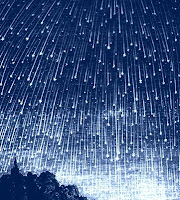Yes, absolutely. Children who are gifted are often mistakenly suspected of having ADHD or other disabilities with behavioral elements.
That may be because along with other gifted characteristics, many gifted children exhibit so-called sensory sensitivities, which can make them seem difficult or uncooperative.
Such kids may become exhausted by classroom noise or be distracted or disturbed by the flicker and buzz of fluorescent light. They may complain about scratchy shirt labels or sock seams and recoil from bright lights, harsh sounds, "bad" smells, or certain food textures. They may also talk rapidly or compulsively, have boundless energy, or display compulsive habits or tics.
Heightened sensitivity combined with heightened intensity is known as overexcitability. Kids with emotional overexcitability experience a more intense range of emotions – whether happy, sad, or angry – than a regular kid. Sensitive kids are more prone to depression, guilt, and physical responses to emotions, such as stomach pains or headaches due to anxiety.
Some gifted kids' brains consume glucose far more quickly than is typical. If their blood sugar levels dip too fast, it can cause sudden, inexplicable meltdowns, poor judgment, or lack of impulse control. (Frequent high-protein, low-sugar snacks can alleviate this problem.)
Very bright children are often unusually strong willed, negotiate like lawyers, use sarcasm to make a point, refuse to suffer fools, or are overly critical. Sometimes, gifted children are disruptive in classrooms because they refuse to do exercises they consider to be busywork. Of course, all of this can be true of any kid, it's just more so for gifted children. Misbehavior in the classroom can sometimes indicate that grade-skipping could be in order.
So how can you tell whether your child's misbehavior is due to giftedness? One sign is if the unwanted behavior is specific to a situation. Maybe your child mucks up only at school. But at home, he's consumed with a project or pastime, often getting lost in the activity and losing track of time, or isn't easily deterred from the task (he doesn’t hear you calling him for dinner because he's engrossed in a book, say).
If that's the case, you may have a gifted kid on your hands. In either case, misbehavior needs to be dealt with and not just tolerated, regardless of the reason for it.
Another way of teasing out giftedness versus straight-up misbehavior is to observe how your child acts in settings where he's engaged in activities he likes with kids who share his interest and abilities. If he's focused, engaged, and cooperative, that may explain why he acts out in situations where he's not stimulated enough.
Written in consultation with Linda Powers Leviton, a psychotherapist specializing in the needs of the gifted, and James T. Webb, a clinical psychologist and lead author of "A Parent's Guide to Gifted Children".





